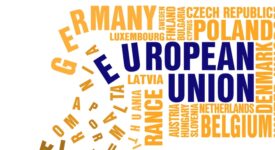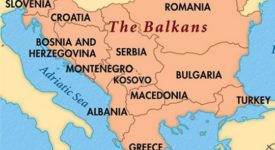China’s global Belt and Road Initiative (BRI), which aims to facilitate exchanges between China and the broader Eurasian region through new land and maritime links has become the country’s signature foreign policy venture. The BRI’s ubiquity in Chinese official discourse and the significant resources poured into related infrastructure projects have grabbed the attention of policymakers worldwide, including in Europe. The BRI presents tremendous opportunities in terms of trade and growth, while also posing deep challenges to European interests when it comes to maintaining an open and rules-based global economic system.
Europe is a prime investment destination for the Belt and Road Initiative. Chinese foreign direct investments there has soared from under €1 billion in 2008 to €35 billion in 2016 — more than triple the amount of European financing flowing in the opposite direction. And, while the bulk of China’s investments still go to Western Europe, there has been an uptick in BRI-related activities in Central, Eastern, and Southern Europe including the Western Balkans.
These regions generally have political and regulatory environments that are more favorable to China than those in Western Europe. Moreover, their infrastructure needs are often substantial and their available financing options more limited. For these reasons, China has, for instance, jumped in to finance a $1.1 billion railway between Budapest and Belgrade to realize its vision of creating a transportation and energy hub for the BRI, though progress has so far been slow. In those European countries hit the hardest by the euro crisis, China has concluded advantageous deals with cash-strapped governments that have had to privatize national assets, including critical infrastructure.
Some of these activities have provided China with a political foothold enabling it to influence EU policies. For example, in June 2017, Greece blocked an EU statement at the UN Human Rights Council criticizing its human rights record, the first time the union failed to make a joint statement at the UN’s top human rights body. In March 2017, Hungary refused to sign a joint letter denouncing the reported torture of detained lawyers in China, breaking EU consensus. And in July 2016, Hungary and Greece sought to block any direct reference to China in an EU statement about the ruling by the Permanent Court of Arbitration in The Hague that struck down its legal claims in the South China Sea.
As a result, the EU is growing more skeptical and apprehensive of China’s intentions and the way that some projects are being carried out. In April, all member states’ ambassadors to Beijing (except for Hungary’s) signed a statement saying that the BRI “runs counter to the EU agenda for liberalizing trade and pushes the balance of power in favor of subsidized Chinese companies.” Nevertheless, several member states – including Hungary and more recently Greece – have broken down and signed bilateral memorandums of understanding with China on BRI cooperation.
The EU has voiced concerns regarding BRI projects on issues such as lack of respect for labor, environment, and human rights standards; insufficient transparency and open procurement; and debt sustainability. At the June 2017 Belt and Road Forum in Beijing, European Commission Vice President Jyrki Katainen acknowledged the opportunities presented by growing interconnectivity while stressing that the EU would only endorse the BRI if China adhered to principles such as openness, interoperability, transparency, and sustainability.
Ultimately, China’s global rise and its Belt and Road Initiative present a challenge to the shared interest of Europe and the United States in maintaining the rules-based international order. Increased transatlantic cooperation on managing the risks associated with it while also capitalizing on its positive effects is therefore required. This conversation that should take place on a regular basis in various formats has the potential to constitute a proactive and forward-looking agenda at a time when much of the traditional transatlantic relationship is otherwise in flux. In this context, Europe’s new connectivity strategy is a welcome development that will be worth following closely in the next few years.
‚Europe’s Emerging Approach to China’s Belt and Road Initiative‘ – Analysis by Erik Brattberg and Etienne Soula – Carnegie Endowment for International Peace.
(The Analysis can be downloaded here)






